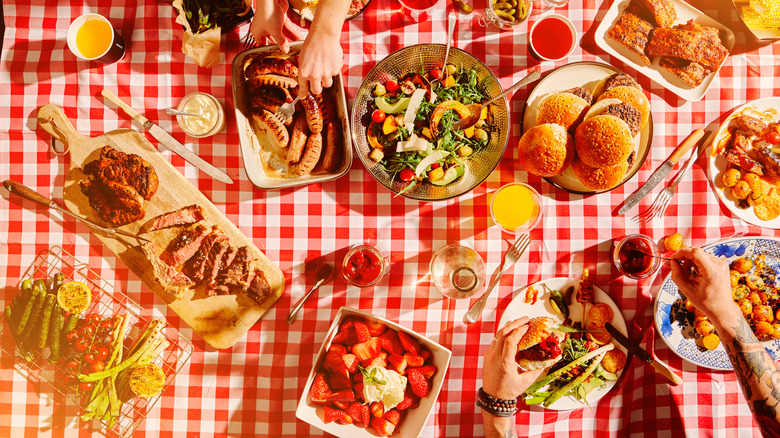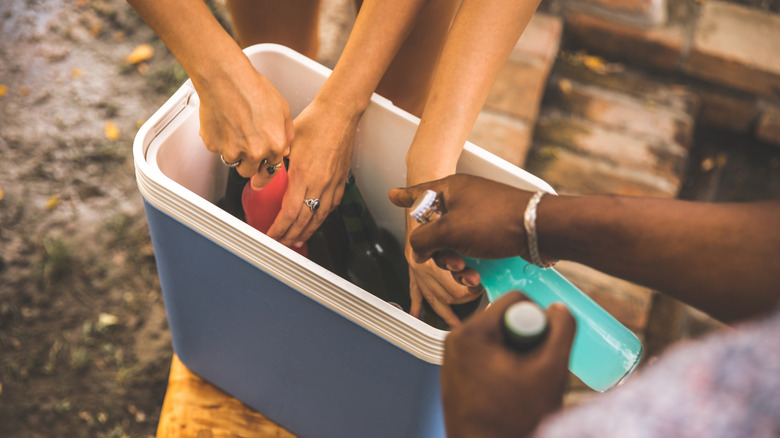The Crucial Food Safety Rule To Follow For All Your Summer Picnics
If you think food tastes better outside, you are not alone. Outdoor dining often takes place in a memorable and relaxed environment, and the fresh air and breezes can enhance the aromatic input — a key element in how we taste anything — be it the earthy and floral notes emanating from flowers, trees, and grass or the wafting BBQ smoke that's delicious enough to pick you off the ground and float you to the source as in so many childhood cartoons.
However, it's essential to follow a key food safety rule to prevent your experience from becoming a nightmare — keep all picnic food in the temperature zone. Otherwise, bacteria can grow quickly in the heat and send your pals running to the toilet and, in some cases, to the hospital. To avoid this, the U.S. Food & Drug Administration instructs picnickers to keep all food outside the "danger zone" of 40-140 degrees Fahrenheit for more than two hours. That's reduced to one hour if the day's temperature rises above 90 degrees Fahrenheit. Keeping the food in a car without air conditioning can make this worse quickly, with an 80-degree day jacking up the temperature in the car to 109 degrees in just 20 minutes, and up to 118 degrees in 40 minutes.
Keeping picnic food safe and cool
The good news is that it only takes a little preparation to keep your favorite picnic dishes safe. One of the best ways is packing food in a cooler, ideally ¼ with ice or ice packs and 3/4 with food and drink. Choosing the right cooler can make a big difference, too, as older ones may be cracked or poorly insulated. Size matters since cramming a lot of food in a small cooler leaves little room for ice. That's why packing separate coolers for food and drink is a great way to slow ice melt because drink coolers are opened more regularly. Bagged or sealed ice, rather than free-floating ice cubes, is also better, as it prevents ice from absorbing any lingering bacteria in the cooler.
Other cooling strategies include keeping your food inside your air conditioned car for as long as possible (but not in the trunk, which isn't climate controlled). Freezing or chilling picnic food — along with the plates and bowls they are in — ahead of time can also stave off bacteria growth for longer. Eating in courses exposes food to the heat only when it's being consumed. Lastly, covering your food with a clean dish towel or aluminum foil prevents sunlight from direct contact with the dishes and slows the escape of cold air. Taking measures like these to cool your picnic food and drink can ensure warm memories afterwards.

